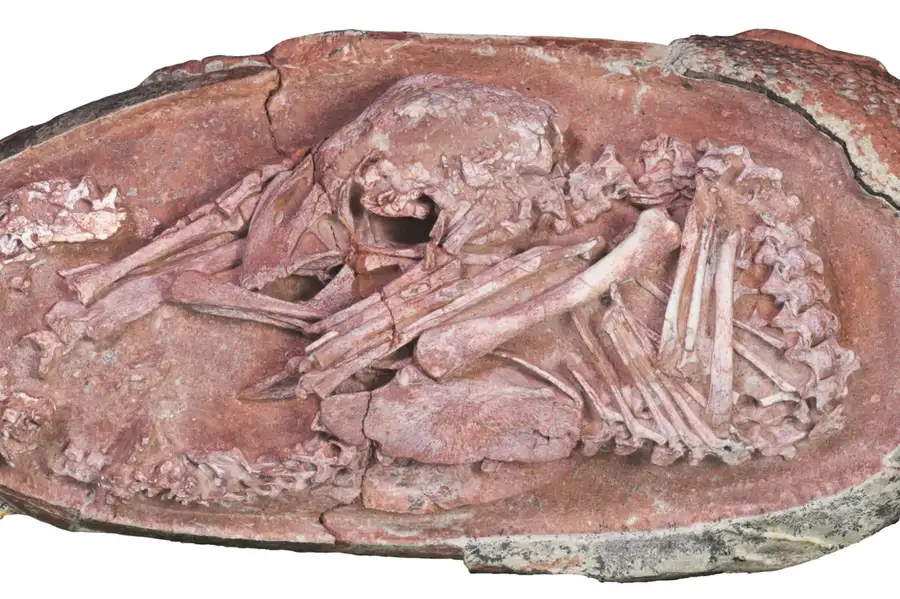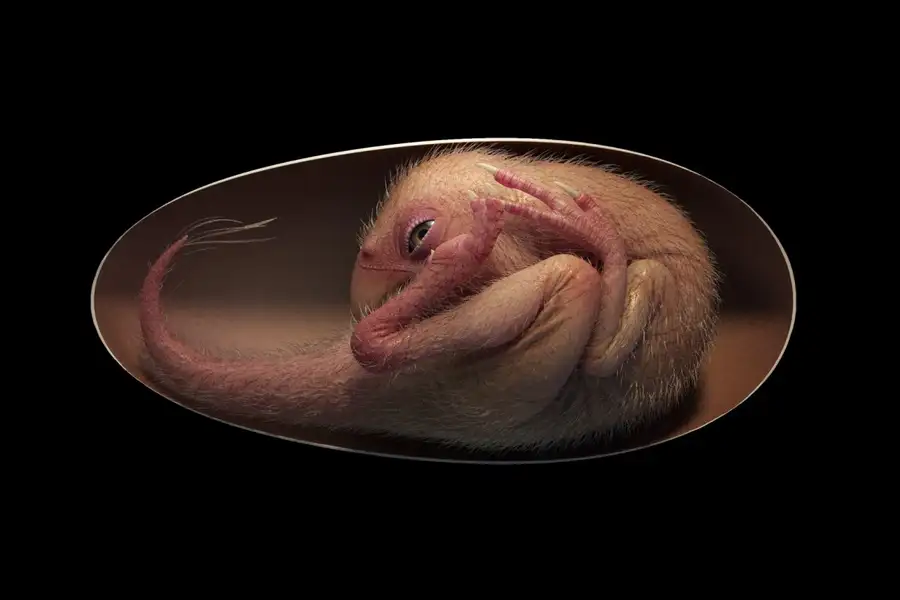A 70 million-year-old oviraptorosaur egg that had been forgotten in a Chinese museum storeroom contains the most well-preserved dinosaur embryo ever discovered
A fossilised dinosaur embryo discovered in southern China may be the most well-preserved ever uncovered.
The dinosaur egg containing the embryo had languished for more than a decade in a storeroom in Yingliang Stone Natural History Museum in Nan’an, China, until 2015, when a staff member noticed bones sticking out of the shell and wondered if it may contain an unhatched dinosaur.

The fossilised oviraptorosaur dinosaur embryo curled up in its egg. Xing et al., 2021
“The museum realised it must be an important specimen, so they contacted us to look at the egg,” says Waisum Ma at the University of Birmingham in the UK. “We were surprised to see this embryo beautifully preserved inside.”
The unhatched dinosaur’s 24-centimetre-long skeleton is curled inside the egg, with its head tucked tightly into its body. The egg is 17 centimetres long and 8 centimetres wide.
Features of the skeleton suggest it is an oviraptorid – a two-legged dinosaur that had a bird-like head and feathers.
The egg appears to be 72 to 66 million years old. It was probably buried rapidly in sand or mud to allow its remarkable preservation, says Ma. “It is very rare to find dinosaur embryos, especially ones that are intact,” she says.
The embryos of modern birds also adopt a tucked posture to protect themselves for hatching. This suggests the posture first evolved in dinosaurs, not in modern birds as was previously thought, says Ma. “We’ve never had embryos well-preserved enough to see this before,” she says.

A reconstruction of an oviraptorosaur dinosaur embryo that is close to hatching. Lida Xing
Little is known about the egg’s origins, except that it was found in Shahe Industrial Park in Ganzhou City in southern China and donated to the museum in 2000. “We’re not sure how it was first discovered but we guess it was something related to construction work,” says Ma.